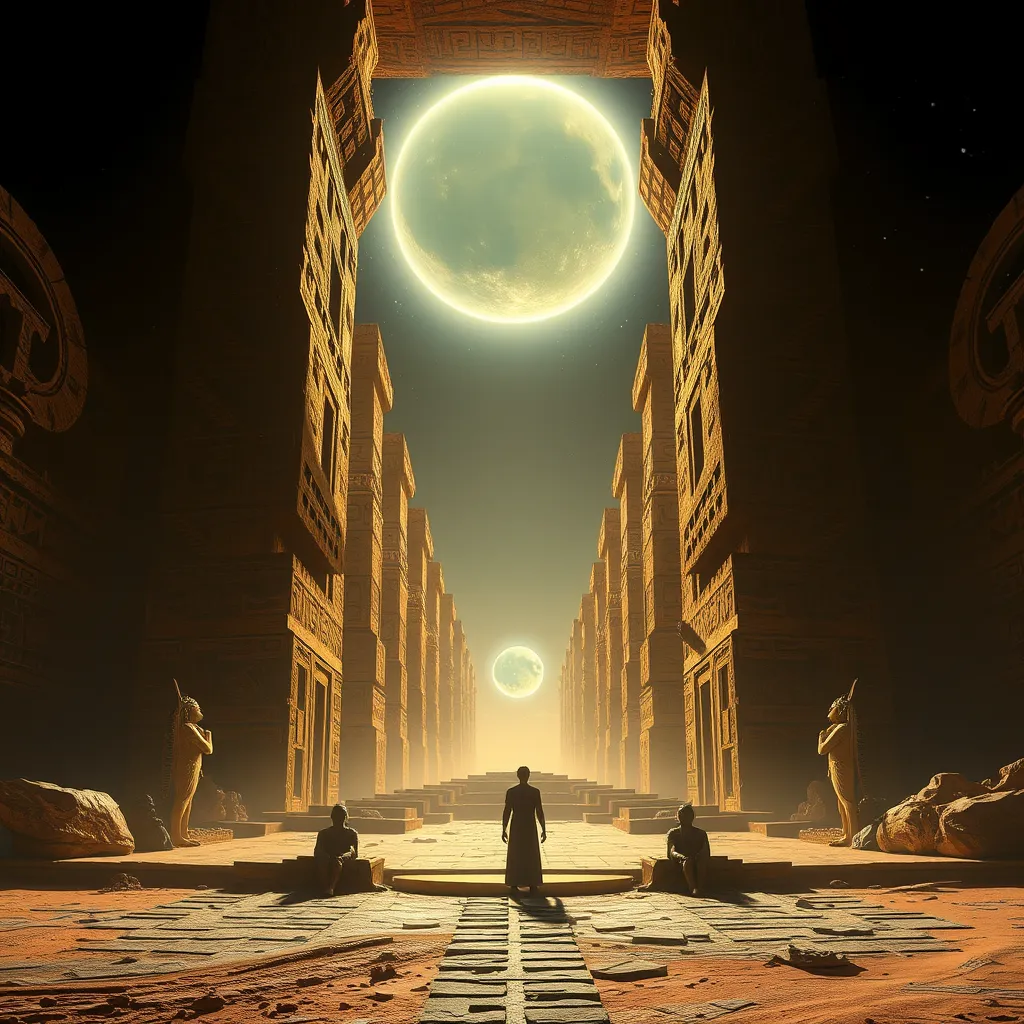The Duat: Beyond the Veil of Reality
I. Introduction to the Duat
The Duat, often referred to as the realm of the dead in ancient Egyptian mythology, serves as a critical concept in understanding the Egyptian view of life, death, and the afterlife. It is a complex and multifaceted dimension that represents both a physical and metaphysical space where souls journey after death.
Culturally, the Duat is significant as it encapsulates the Egyptians’ beliefs regarding the afterlife, emphasizing the importance of moral conduct in life and the hope for rebirth. It is within this realm that the souls of the deceased encounter various trials and deities that dictate their fate in the afterlife.
II. Historical Context of the Duat
The origins of the Duat can be traced back to ancient Egyptian beliefs surrounding death and the afterlife. As early as the Old Kingdom, the Egyptians began to conceptualize the afterlife as a journey through a realm filled with dangers and deities that needed to be navigated successfully.
Throughout the various dynasties, the understanding of the Duat evolved, incorporating new myths and religious practices. By the New Kingdom, the Duat became more systematically defined, with specific texts, such as the Book of the Dead, outlining the journey through this enigmatic space.
III. The Structure of the Duat
The Duat is often depicted as a vast, multi-layered realm. It is structured in a way that reflects the complexities of life and death. Within the Duat, there are various realms that the deceased must traverse, each representing different stages of the afterlife journey.
- The Waters of Chaos: The journey begins in a dark, chaotic body of water, symbolizing the primordial state of existence.
- The Fields of Iaru: A paradise-like realm where the righteous enjoy eternal bliss.
- The Hall of Judgment: A crucial location where the deceased’s heart is weighed against the feather of Ma’at to determine their fate.
Each of these locations holds significant symbolic meaning, representing various aspects of the soul’s journey and the struggles between chaos and order.
IV. Deities and Entities of the Duat
The Duat is populated by a multitude of deities and entities, each playing a vital role in the afterlife journey. Major gods associated with the Duat include:
- Osiris: The god of the afterlife and resurrection, who presides over the judgment of souls.
- Anubis: The jackal-headed god responsible for mummification and guiding souls through the Duat.
- Ma’at: The goddess of truth and justice, whose feather is used in the weighing of the heart.
Additionally, mythical creatures and spirits inhabit the Duat, serving as both guardians and obstacles for the deceased. These entities embody the trials one must face, such as the monstrous Ammit, who devours the souls of the unworthy.
V. The Journey through the Duat
The journey through the Duat is fraught with challenges and trials that the deceased must navigate to achieve eternal life. A significant aspect of this journey is the weighing of the heart, where the deceased’s heart is measured against the feather of Ma’at, representing truth and justice.
If the heart is lighter than the feather, the soul is deemed worthy and is allowed to enter the Fields of Iaru. However, if it is heavier, it is consumed by Ammit, condemning the soul to eternal oblivion.
The trials faced in the Duat are numerous, including:
- Confronting various demons and spirits.
- Overcoming obstacles that test one’s moral integrity.
- Reciting spells and incantations from the Book of the Dead to seek guidance and protection.
VI. Symbolism and Themes in the Duat
The Duat is rich in symbolism, encapsulating themes of life, death, and rebirth. It represents the cyclical nature of existence, where death is not an end but rather a transition to another form of life. The motifs of resurrection and renewal are prevalent, mirroring the annual flooding of the Nile, which brings life to the land.
Moreover, the Duat embodies the duality of existence. It illustrates the balance between chaos and order, darkness and light, reflecting the Egyptians’ understanding of reality as a complex interplay of opposing forces.
VII. The Duat in Modern Interpretations
The concept of the Duat has transcended time, influencing contemporary literature, art, and spiritual practices. Modern interpretations often draw upon the rich imagery and symbolism of the Duat, exploring themes of death and the afterlife in various forms.
In literature, authors may reference the Duat to explore the human experience of mortality and the quest for meaning beyond life. Similarly, artists may use the Duat as a source of inspiration, creating works that evoke the mysterious and often dark nature of the afterlife.
Furthermore, the Duat’s relevance persists in modern spiritual practices, where individuals seek to understand the nature of existence, life after death, and their place within the cosmos.
VIII. Conclusion
In summary, the Duat stands as a profound element of ancient Egyptian belief, offering insights into their understanding of life, death, and the afterlife. It encapsulates the complexities of the human experience, illustrating the journey of the soul through trials and transformations.
The enduring legacy of the Duat continues to resonate within human consciousness, reminding us of the mysteries that lie beyond the veil of reality and the universal quest for understanding our existence.




